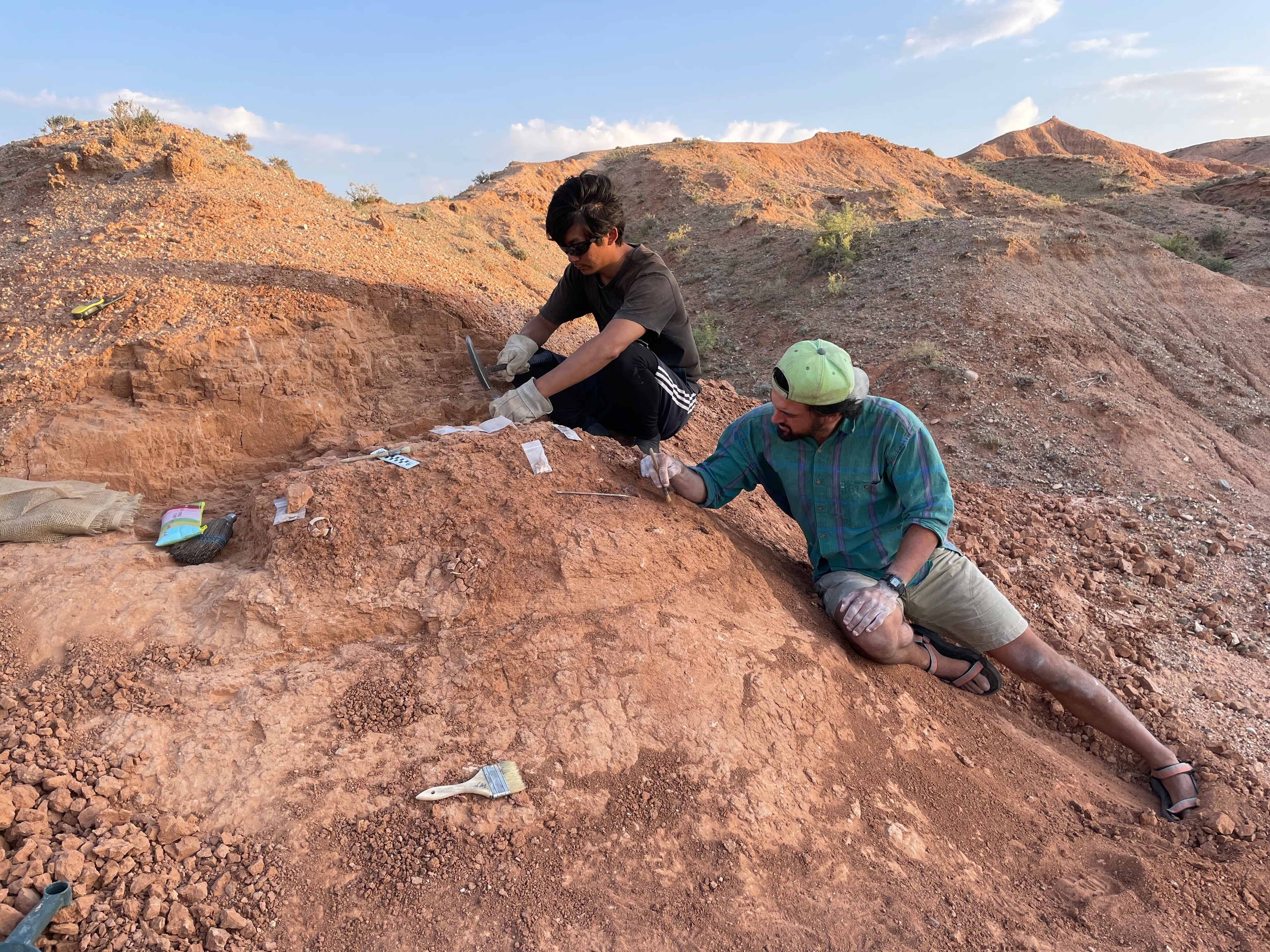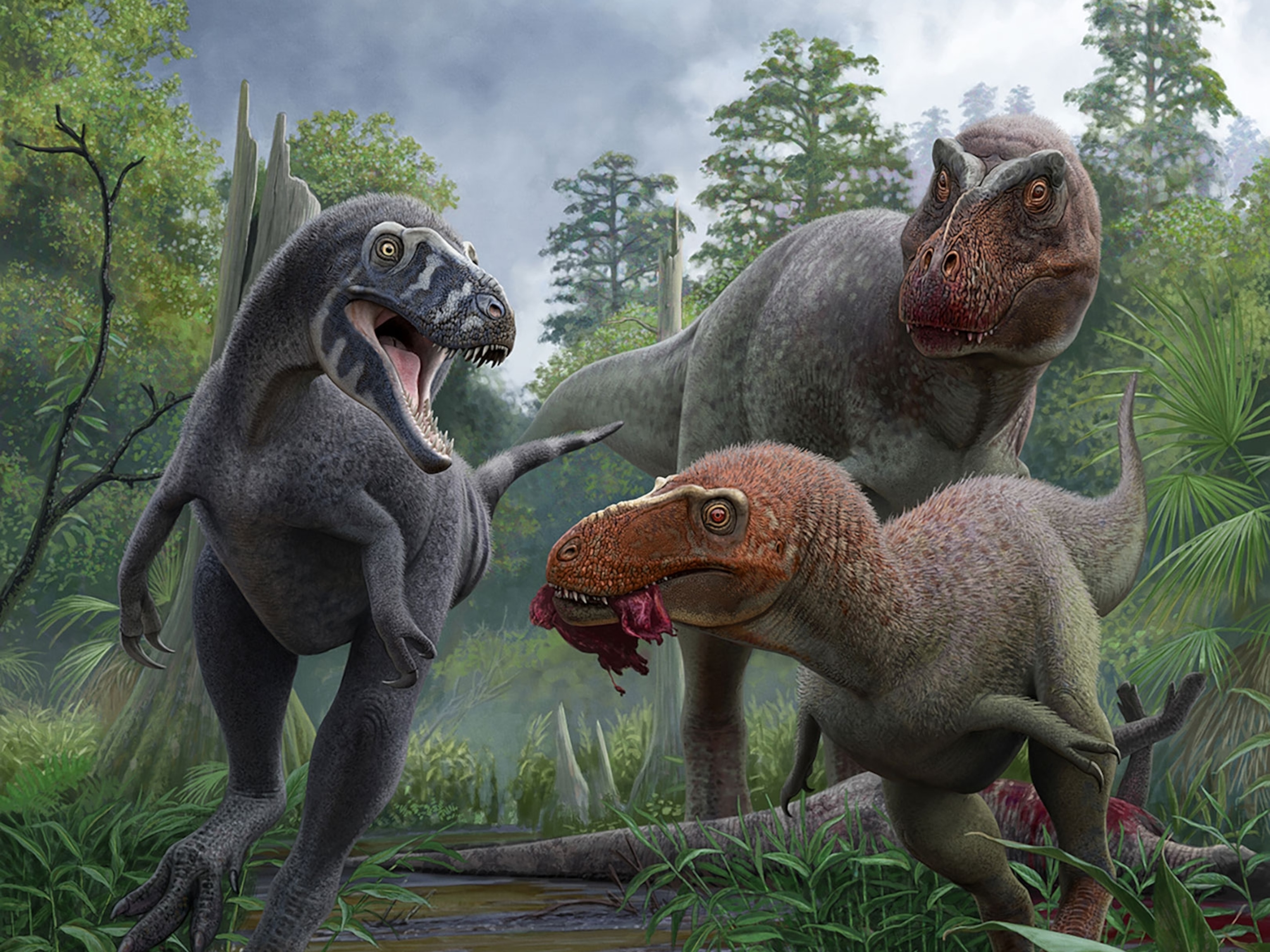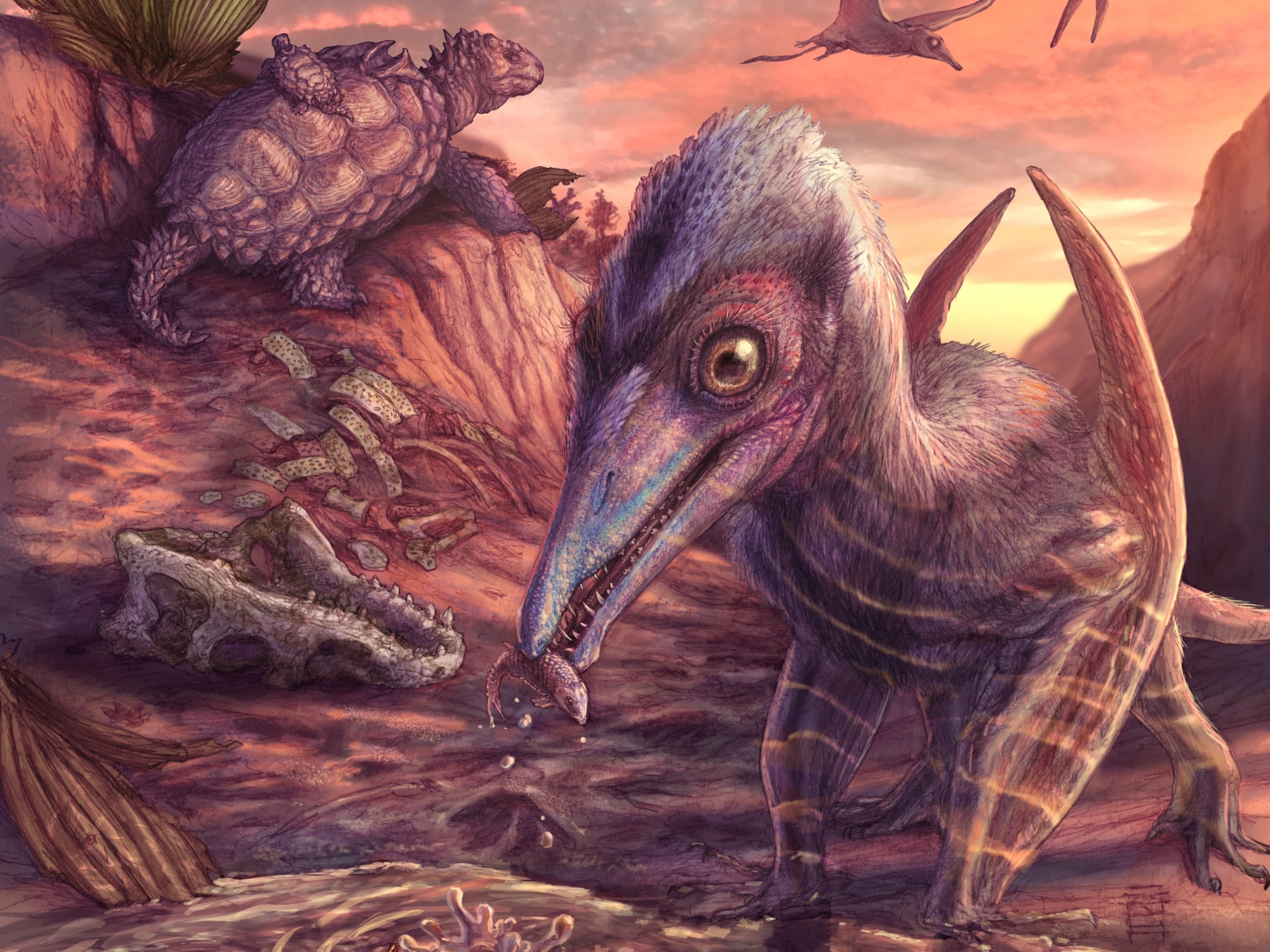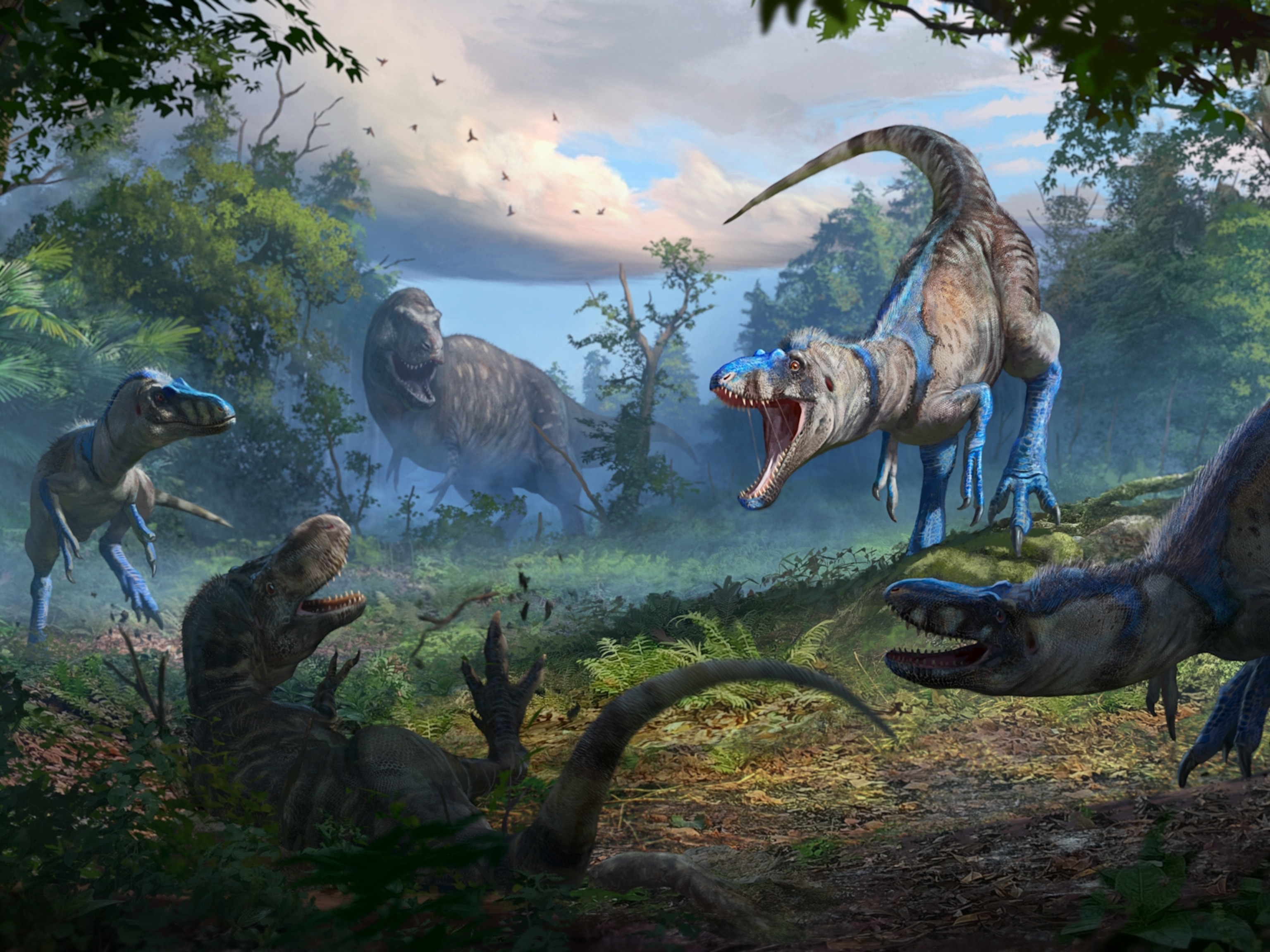
Two-Ton "Alien" Horned Dinosaur Found—"Different From Every Other"
New species suggests flamboyant beginnings for Triceratops lineage.
A newly identified species of spiky-headed dinosaur that roamed Canada 78 million years ago is the oldest known large, horned reptile ever discovered in North America.
"In terms of large-bodied ones that look like Triceratops, this is definitely the oldest," said biologist Michael Ryan, lead author of the new study describing the dinosaur, published online Thursday by the Canadian Journal of Earth Sciences.
The newfound plant-eater has been named Xenoceratops foremostensis—Latin for "alien horned-face from Foremost," the small Canada town where some Xenoceratops fossils were found in 1958.
Like its more famous cousin Triceratops—which lived 15 million years later, during the dinosaurs' last days—Xenoceratops had long spearlike horns thrusting from its brow and a shieldlike frill extending back from its skull. But unlike Triceratops, Xenoceratops also had horns on its frill.
(Read about another Triceratops ancestor found in Canada.)
Like No Other Dinosaur
The new dinosaur is known from fragments of fossilized skull and horn found in Alberta, Canada. Ryan and his team recently found 78-million-year-old bones during a dig, and that led them to search the collection of the Canadian Museum of Nature in Ottawa for other fossils from the same time period.
There, the team found the 1958 fossils, which had long since been filed away. The museum fossils dated to the same period as Ryan's team's bones, and appeared to belong to the same unidentified species of dinosaur.
"In the museum we found ... two large pieces of the frill, including one spike. As soon as I saw them, I recognized it as being different from every other horned dinosaur," said Ryan, who heads the vertebrate paleontology division of the Cleveland Museum of Natural History in Ohio.
Measuring approximately 20 feet (6 meters) long and more than 2 tons, Xenoceratops was average-size for a horned dinosaur—African elephant-size Triceratops was half again as large. But the new dino would have been among the largest ceratopsids alive 80 million years ago.
Living alongside Xenoceratops would have been predators related to Tyrannosaurus rex as well as duck-billed dinosaurs and ankylosaurs—dinosaurs resembling giant armadillos with big club tails.
In the late Cretaceous period, they all would have known a very different Alberta from the current, cool Canadian province, Ryan said. In the then subtropical region, "there were probably wet and dry periods, but there would never have been snow or frost."
Today, the area around Foremost is prairie country, he said, and inhabited by the modern analog of horned dinosaurs: cattle.
(Also see "New Dinosaur: Titanic Triceratops Ancestor?")
Early Developers
Xenoceratops' flamboyant frill reveals that horned dinosaurs evolved intricate cranial ornaments very early in their lineage—adornments that got only more elaborate with time, scientists say.
"Historically, what we know [about horned dinosaurs] comes from about 65 to 75 million years of age," Ryan explained. "What we've done is push back the evolutionary origins by several million years."
(Related: "Two New Horned Dinosaurs Found in Utah.")
Moreover, it appears that Xenoceratops and Triceratops' different scientific subfamilies—Centrosaurinae and Chasmosaurinae, respectively—didn't look all that different from one another early in their evolution.
"We're starting to see that, even though the endpoints of the two groups look very different from each other"—for example, the descendants of Xenoceratops lacked long, Triceratops-like brow horns—"the ancestral forms of the two groups were very similar," Ryan said.





